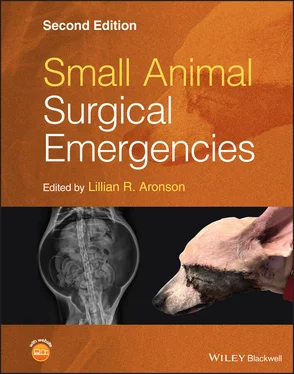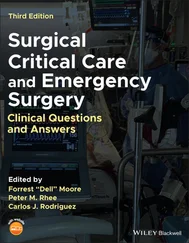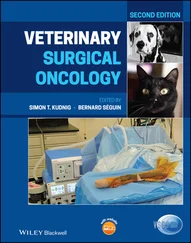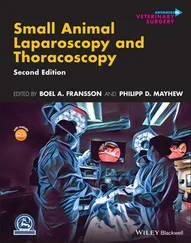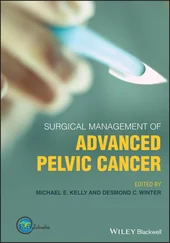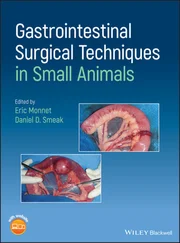19 Section IIIc: Respiratory System – Chest Wall Disease 41 Stabilization Techniques for Patients with Chest Wall Disease Introduction General Stabilization Approach Nonpenetrating Wounds Penetrating Wounds Conclusion 42 Pectus Excavatum Introduction Etiology Clinical Signs and Physical Examination Emergency Stabilization Diagnostics Severity of Deformity Treatment Options Anesthetic Considerations Perioperative and Postoperative Complications Postoperative Care Prognosis 43 Flail Chest Introduction Clinical Signs and Diagnosis Treatment
20 Section IV: Cardiovascular System 44 Pacemaker Therapy Introduction Indications for Pacemaker Therapy Patient Evaluation Transcutaneous Pacing Transvenous and Epicardial Pacemaker Components Pacing Basics Temporary Transvenous Pacemakers Permanent Transvenous Pacemakers Epicardial Pacemakers Programming Pacemaker Complications 45 Pericardial Effusion Introduction Anatomy and Physiology Etiology and Signalment Diagnosis of Pericardial Effusion Emergency Stabilization Surgery Thoracoscopy Medical Treatment Other Treatments Prognosis Conclusion 46 Open‐Chest Cardiopulmonary Resuscitation Introduction Reasons for Cardiopulmonary Arrest Recognition of Cardiopulmonary Arrest Open‐Chest Cardiopulmonary Resuscitation Performing Open‐Chest Cardiopulmonary Resuscitation Monitoring Post‐Arrest Care Prognosis
21 Section V: Reproductive System 47 Cesarean Section Patient Presentation Emergency Stabilization and Diagnostic Evaluation Anesthetic Considerations Operative Technique Postoperative Care Surgical Complications 48 Pyometra Introduction Signalment and Presenting Complaints Diagnosis Resuscitation and Medical or Surgical Management Preoperative Consideration Surgical Approach Intraoperative and Postoperative Care Prognostic Indicators 49 Penile and Testicular Emergencies Introduction Anatomy Emergency Conditions of the Penis and Prepuce Surgical Procedures of the Penis Testicular Emergencies Conclusion 50 Prostatic Abscessation Introduction Anatomy Physiology Pathophysiology Diagnosis Management Postoperative Care Castration Prognosis 51 Uterine and Vaginal Prolapse Anatomy of the Uterus and Vagina Uterine Prolapse Vaginal Prolapse Prognosis
22 Section VI: Wound Management 52 Bite Wounds Introduction Local Tissue Injury Systemic Effects of Bite Wounds Initial Evaluation and Stabilization Injury Assessment Treatment Antibiotic Use in Patients with Bite Wounds Postoperative Management and Complications Infectious Disease 53 Burn Injury Presentation Pathophysiology and Healing Initial Stabilization and Treatment of Burn Wound Patients Treatment Methods Negative‐Pressure Wound Therapy and Burn Wounds Postoperative Care Surgical Complications Chemical Burns Electrical Burns Frostbite Conclusion 54 Penetrating Injury in the Dog and Cat Introduction Ballistics in Veterinary Medicine Local Tissue Effects Systemic Effects Triage and Stabilization Surgery Porcupine Quill Injury Impalement Injuries Antibiotic Use in Penetrating Wounds Postoperative Care 55 Necrotizing Fasciitis Introduction Risk Factors Microbiology Pathophysiology Initial Evaluation and Diagnosis Stabilization Analgesia Antimicrobial Therapy Diagnostic Imaging Surgical Management Postoperative Wound Management Physical Therapy Conclusion 56 Degloving and Shear Injuries Introduction Anatomy Wound Healing Degloving and Shear Injuries Immediate Response to Degloving and Shear Injury Managing Degloving and Shear Injuries Antibiotics Topical Medications Complications Summary 57 Skin Flaps and Grafts Introduction Skin Flaps and Grafts Basic Reconstructive Surgery Principles Complications and Management of Skin Flaps Free Skin Graft Failure Conclusion 58 Incisional Infections Introduction Defining Surgical Site or Incisional Infections Epidemiology of Incisional Infections Managing Risks Associated with Incisional Infections Prevention of Incisional Site Infections Treatment of Incisional Infections Conclusion
23 Section VII: Ocular Emergencies 59 Ocular Emergencies Introduction Initial Stabilization Ocular Examination Surgical Supplies (see also Chapter 2) Surgical Preparation Anatomy Proptosis Eyelid Laceration Nictitating Membrane Lacerations Corneal Trauma Conjunctival Grafting
24 Section VIII: Oral Surgical Emergencies 60 Oral Surgical Emergencies Introduction Oral Inflammation Tooth Fractures Oral and Maxillofacial Swellings Tooth Displacement Injuries Palate Defects Jaw Fractures Temporomandibular Joint Luxation Open‐Mouth Jaw Locking Temporomandibular Joint Ankylosis Masticatory Muscle Myositis Bite Wounds Foreign Bodies Projectile Injuries Burns Lip Avulsion Oral Bleeding
25 Section IX: Orthopedic Emergencies 61 Approach to the Septic Joint Importance Diagnosis Treatment Options Choosing a Treatment Protocol Prognosis 62 Surgical Management of Open Fractures Introduction Patient Evaluation Fracture Classification Radiographic Examination Initial Wound Management Antimicrobial Therapy Definitive Surgical Treatment Results and Complications 63 Traumatic Joint Luxation and Reduction General Scapula Shoulder Elbow Carpus Metaphalangeal and Interphalangeal Joints Hip Stifle Tarsus
26 Index
27 End User License Agreement
1 Chapter 1 Table 1.1 Commonly used vasopressors used in the emergency room and intensiv... Table 1.2 Monitoring parameter guidelines and frequencies for dehydrated pat... Table 1.3 Analgesics, sedatives, and anxiolytics used in small animal medici...
2 Chapter 2 Table 2.1 Stapling cartridge information chart.
3 Chapter 3 Table 3.1 Etiologies of acute abdomen.
4 Chapter 4 Table 4.1 Published outcome data for esophageal foreign body management.
5 Chapter 9 Table 9.1 Emergency therapies.
6 Chapter 11 Table 11.1 Comparison of peritoneal effusion and peripheral blood glucose an... Table 11.2 Suggested antibiotic therapy for dogs and cats with septic perito... Table 11.3 Suggested vasopressor and inotropic therapy for dogs and cats wit... Table 11.4 Suggested anesthetic and analgesic drugs for dogs and cats with s... Table 11.5 Comparison of common peritoneal drainage techniques. Table 11.6 Suggested criteria for selecting a method of peritoneal drainage....
7 Chapter 14Table 14.1 Blood transfusion products, their indications and dosages.Table 14.2 Ligation times for arteries and veins to assist in surgical hemos...
8 Chapter 20Table 20.1 Specific therapy for gastrointestinal ulceration.
9 Chapter 22Table 22.1 Emergency treatment of hyperkalemia.Table 22.2 Supplies for urinary catheter placement.
10 Chapter 26Table 26.1 Medical therapy used in conjunction with fluid therapy to induce ...Table 26.2 General guidelines for intravenous catheter gauge and correspondi...
11 Chapter 28Table 28.1 Drug doses for management of animals with upper airway obstructio...
12 Chapter 33Table 33.1 Recommended drugs and dosages for the medical management of trach...
13 Chapter 34Table 34.1 Classification of pleural effusion. a
14 Chapter 40Table 40.1 Recommended open surgical approach based on location of intrathor...
15 Chapter 41Table 41.1 Suggested analgesic drugs and dosages.Table 41.2 Commonly used drugs and doses for epidural anesthesia. a
16 Chapter 42Table 42.1 Normal frontosagittal and vertebral indices.Table 42.2 Characterization of pectus excavatum in dogs and cats.
17 Chapter 45Table 45.1 Comparative elements between traditional surgery and thoracoscopi...
18 Chapter 48Table 48.1 Clinical pathology abnormalities seen in canine and feline patien...Table 48.2 Stabilization and treatment recommendations for canine and feline...
19 Chapter 56Table 56.1 The phases of normal wound healing in a healthy wound. A one‐year...
20 Chapter 59Table 59.1 Drug recommendations and dosages for patients that have sustained...
Читать дальше
